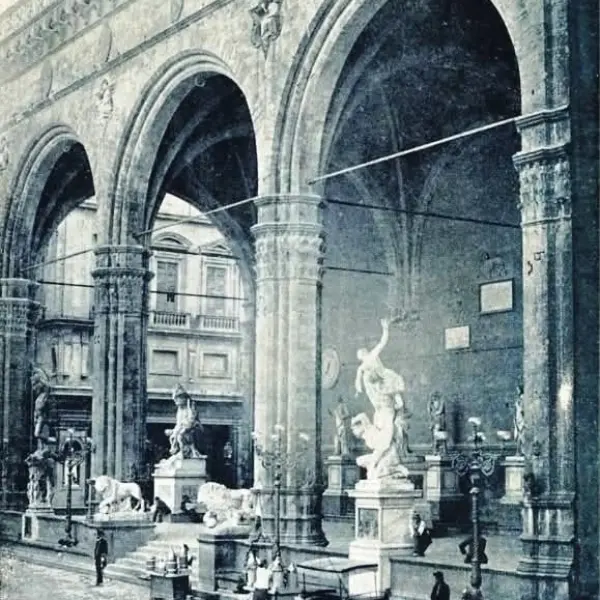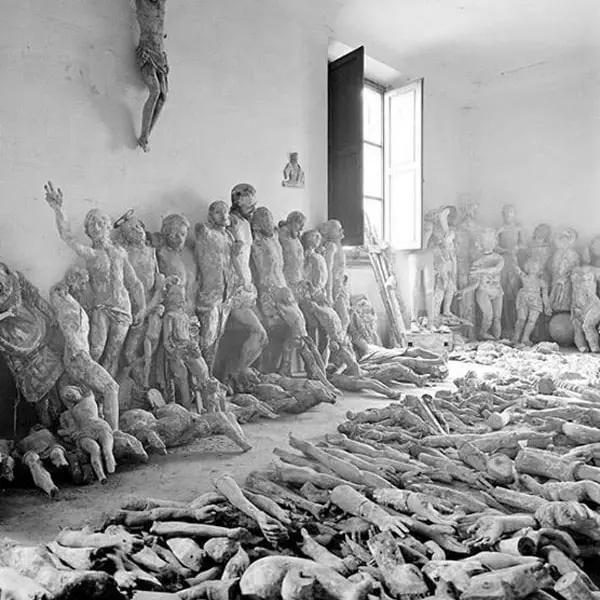Automobile outside Firenze
Life in Florence, Italy, in the 1920s: A City of Art, Change, and Resilience
Picture Florence in the 1920s—a city still glowing with its Renaissance legacy but navigating the turbulent currents of post-World War I Italy. Firenze, as locals call it, was a vibrant hub of art, culture, and history, yet it faced economic struggles, political upheaval, and the looming shadow of Fascism. Here’s a lively snapshot of what life was like in Florence during this transformative decade.
A City Steeped in Art and History
Florence in the 1920s remained a magnet for artists, writers, and intellectuals. The Uffizi Gallery and the Duomo stood as timeless testaments to the city’s Renaissance glory, drawing tourists and scholars from across Europe and beyond. The Odeon Cinema, established in 1920 in the Palazzo dello Strozzino, was one of the city’s newest cultural gems, blending old-world charm with modern entertainment. Florentines took pride in their city’s heritage, with the Florentine dialect—already the foundation of standard Italian—spoken in bustling markets and cobblestone streets.
The 1920s also saw a fashion revolution. Florence’s Via Tornabuoni, the city’s most elegant street, was home to chic boutiques and historic cafés like Caffè Giacosa, where the Negroni cocktail was born. Vintage shops sold treasures like 1920s Chanel gloves, reflecting a growing interest in high fashion. For the wealthy, life was a blend of cosmopolitan flair and Tuscan tradition, with leisurely aperitifs at wine bars and strolls along the Arno River.
Everyday Life: Markets, Food, and Community
For most Florentines, daily life revolved around community and survival. The San Lorenzo market buzzed with vendors selling fresh produce, truffle oil, and pasta, while the Mercato Centrale was a sensory explosion of Tuscan flavors—think ribollita (bread soup) and bistecca alla fiorentina (rare steak). Meals were a sacred ritual, often shared with family in modest homes or trattorias. Despite economic hardship following the war, Florentines maintained their love for good food and lively conversation.
The city was walkable, with trams and bicycles navigating the narrow streets. Public transport connected Florence to nearby towns like Scandicci, but the historic center—unchanged since medieval times—remained the heart of social life. Working-class Florentines, including artisans and shopkeepers, lived in cramped apartments, while the elite resided in restored palazzos in neighborhoods like Oltrarno, south of the Arno.
Political and Social Tensions
The 1920s were a volatile time in Italy, and Florence was no exception. After World War I, the city grappled with inflation, unemployment, and social unrest. The rise of Benito Mussolini’s Fascist movement cast a dark shadow. By 1922, Mussolini’s March on Rome brought him to power, and Florence’s political landscape shifted. Fascist supporters clashed with socialists and workers, creating tension in the streets. The British expatriate community, a fixture in Florence since the 19th century, faced hostility when Fascists attacked places like Caffè Doney on Via Tornabuoni over anti-Ethiopian invasion protests.
Despite this, Florence retained its cosmopolitan vibe. Foreigners, including Anglo-American expats, mingled with locals in literary circles and theaters like the Teatro della Pergola. The city’s Jewish Quarter near Piazza della Repubblica thrived, though it would later face destruction under Fascist urban renewal.
Economic Realities
Florence’s economy leaned on tourism, small-scale industry, and artisanal crafts. The city’s historic role as a trade and banking hub had faded, but its cultural wealth kept it afloat. Artisans in Oltrarno crafted leather goods and jewelry, while the wool and silk trades persisted. However, many Florentines struggled with rising costs and low wages, especially in the wake of wartime economic disruption. The lira’s value plummeted, making daily necessities like bread and olive oil a stretch for working families.
A Glimpse of Modernity
The 1920s brought touches of modernity to Florence. Cinemas and cafés buzzed with jazz-age energy, and the city’s first trams linked the historic center to outlying areas. Yet, Florence resisted rapid change. Its medieval layout and Renaissance palaces defined its character, and locals clung to traditions like seasonal festivals and religious processions at the Basilica di San Miniato al Monte.
The Florentine Spirit
Florentines in the 1920s were known for their wit, resilience, and deep love for their city. As one modern observer put it, they had a “biting personality” and a “cynical but good-natured” outlook. They navigated hardship with humor, gathering in piazzas to debate politics or share gossip over espresso. Despite political storm clouds, Florence remained a place where art, food, and community thrived.
In short, living in Florence in the 1920s was a blend of timeless beauty and gritty reality—a city where Renaissance ghosts mingled with jazz-age dreams, all under the watchful gaze of the Duomo. For those who called Firenze home, it was, as always, a masterpiece worth preserving.
Picture Florence in the 1920s—a city still glowing with its Renaissance legacy but navigating the turbulent currents of post-World War I Italy. Firenze, as locals call it, was a vibrant hub of art, culture, and history, yet it faced economic struggles, political upheaval, and the looming shadow of Fascism. Here’s a lively snapshot of what life was like in Florence during this transformative decade.
A City Steeped in Art and History
Florence in the 1920s remained a magnet for artists, writers, and intellectuals. The Uffizi Gallery and the Duomo stood as timeless testaments to the city’s Renaissance glory, drawing tourists and scholars from across Europe and beyond. The Odeon Cinema, established in 1920 in the Palazzo dello Strozzino, was one of the city’s newest cultural gems, blending old-world charm with modern entertainment. Florentines took pride in their city’s heritage, with the Florentine dialect—already the foundation of standard Italian—spoken in bustling markets and cobblestone streets.
The 1920s also saw a fashion revolution. Florence’s Via Tornabuoni, the city’s most elegant street, was home to chic boutiques and historic cafés like Caffè Giacosa, where the Negroni cocktail was born. Vintage shops sold treasures like 1920s Chanel gloves, reflecting a growing interest in high fashion. For the wealthy, life was a blend of cosmopolitan flair and Tuscan tradition, with leisurely aperitifs at wine bars and strolls along the Arno River.
Everyday Life: Markets, Food, and Community
For most Florentines, daily life revolved around community and survival. The San Lorenzo market buzzed with vendors selling fresh produce, truffle oil, and pasta, while the Mercato Centrale was a sensory explosion of Tuscan flavors—think ribollita (bread soup) and bistecca alla fiorentina (rare steak). Meals were a sacred ritual, often shared with family in modest homes or trattorias. Despite economic hardship following the war, Florentines maintained their love for good food and lively conversation.
The city was walkable, with trams and bicycles navigating the narrow streets. Public transport connected Florence to nearby towns like Scandicci, but the historic center—unchanged since medieval times—remained the heart of social life. Working-class Florentines, including artisans and shopkeepers, lived in cramped apartments, while the elite resided in restored palazzos in neighborhoods like Oltrarno, south of the Arno.
Political and Social Tensions
The 1920s were a volatile time in Italy, and Florence was no exception. After World War I, the city grappled with inflation, unemployment, and social unrest. The rise of Benito Mussolini’s Fascist movement cast a dark shadow. By 1922, Mussolini’s March on Rome brought him to power, and Florence’s political landscape shifted. Fascist supporters clashed with socialists and workers, creating tension in the streets. The British expatriate community, a fixture in Florence since the 19th century, faced hostility when Fascists attacked places like Caffè Doney on Via Tornabuoni over anti-Ethiopian invasion protests.
Despite this, Florence retained its cosmopolitan vibe. Foreigners, including Anglo-American expats, mingled with locals in literary circles and theaters like the Teatro della Pergola. The city’s Jewish Quarter near Piazza della Repubblica thrived, though it would later face destruction under Fascist urban renewal.
Economic Realities
Florence’s economy leaned on tourism, small-scale industry, and artisanal crafts. The city’s historic role as a trade and banking hub had faded, but its cultural wealth kept it afloat. Artisans in Oltrarno crafted leather goods and jewelry, while the wool and silk trades persisted. However, many Florentines struggled with rising costs and low wages, especially in the wake of wartime economic disruption. The lira’s value plummeted, making daily necessities like bread and olive oil a stretch for working families.
A Glimpse of Modernity
The 1920s brought touches of modernity to Florence. Cinemas and cafés buzzed with jazz-age energy, and the city’s first trams linked the historic center to outlying areas. Yet, Florence resisted rapid change. Its medieval layout and Renaissance palaces defined its character, and locals clung to traditions like seasonal festivals and religious processions at the Basilica di San Miniato al Monte.
The Florentine Spirit
Florentines in the 1920s were known for their wit, resilience, and deep love for their city. As one modern observer put it, they had a “biting personality” and a “cynical but good-natured” outlook. They navigated hardship with humor, gathering in piazzas to debate politics or share gossip over espresso. Despite political storm clouds, Florence remained a place where art, food, and community thrived.
In short, living in Florence in the 1920s was a blend of timeless beauty and gritty reality—a city where Renaissance ghosts mingled with jazz-age dreams, all under the watchful gaze of the Duomo. For those who called Firenze home, it was, as always, a masterpiece worth preserving.
Coche antiguo
Arquitectura
Cervecería
Edificio
Auto
Ropa
Fábrica
Sombrero
Máquina
Modelo T
Persona
Habló
Transporte
Vehículo
Envíado por OldPik el 1 de marzo de 2025
Image

Debes iniciar sesión para comentar las fotos.
Iniciar sesión
Iniciar sesión
Fotos cercanas
The director of the Uffizi Gallery, Giovanni Poggi (far right), inspects the La Gioconda














Sin comentarios aún, sé el primero en comentar...